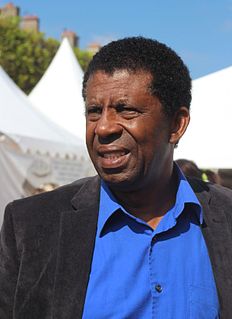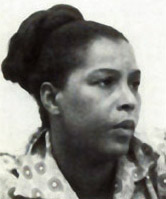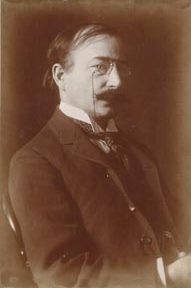Related Research Articles

Lyonel Charles Feininger was a German-American painter, and a leading exponent of Expressionism. He also worked as a caricaturist and comic strip artist. He was born and grew up in New York City, traveling to Germany at 16 to study and perfect his art. He started his career as a cartoonist in 1894 and met with much success in this area. He was also a commercial caricaturist for 20 years for magazines and newspapers in the USA and Germany. At the age of 36, he started to work as a fine artist. He also produced a large body of photographic works between 1928 and the mid 1950s, but he kept these primarily within his circle of friends. He was also a pianist and composer, with several piano compositions and fugues for organ extant.
The Beaver Hall Group refers to a Montreal-based group of Canadian painters who met in the late 1910s while studying art at a school run by the Art Association of Montreal. The Group is notable for its equal inclusion of men and women artists, as well as for its embrace of Jazz Age modernism. They painted a variety of subjects, including portraits, landscapes, urban scenes and still lifes, in a mix of Modernist and traditional styles.

William-Adolphe Bouguereau was a French academic painter. In his realistic genre paintings he used mythological themes, making modern interpretations of classical subjects, with an emphasis on the female human body. During his life he enjoyed significant popularity in France and the United States, was given numerous official honors, and received top prices for his work. As the quintessential salon painter of his generation, he was reviled by the Impressionist avant-garde. By the early twentieth century, Bouguereau and his art fell out of favor with the public, due in part to changing tastes. In the 1980s, a revival of interest in figure painting led to a rediscovery of Bouguereau and his work. Throughout the course of his life, Bouguereau executed 822 known finished paintings, although the whereabouts of many are still unknown.

Jean Paul Lemieux, was one of the foremost twentieth century painters in Canada. He worked in several different styles, as represented by his five artistic periods.

Prudence Heward was a Canadian painter principally known for her figure painting with "brilliant acid colours, sculptural treatment, and an intense brooding quality". She was a member of the Beaver Hall Group and a co-founder of the Canadian Group of Painters and the Contemporary Arts Society.

Horatio Walker was a Canadian painter. He worked in oils and watercolors, often depicting scenes of rural life in Canada. He was highly influenced by the French Barbizon school of painting.
Ken Danby, was a Canadian painter in the realist style, and medallist. Danby is best known for creating highly realistic paintings that study everyday life. His 1972 painting At the Crease, portraying a masked hockey goalie defending his net, is widely recognized and reproduced in Canada.
Rigaud Benoit (1911–1986) had become one of the three or four most highly prized Haitian artists well before his death.

Dany Laferrière is a Haitian-Canadian novelist and journalist who writes in French. He was elected to seat 2 of the Académie française on 12 December 2013, and inducted in May 2015.

Philomé Obin was a Haitian painter.

Rose-Marie Desruisseau was a Haitian painter. Born in Port-au-Prince, Desruisseau won many awards in Haiti for her works, which have been exhibited in Senegal, Venezuela, Santo Domingo, the United States, Canada, and Martinique. After gaining an interest in Vodou in the 1960s, Desruisseau began to include themes of Vodou in her work. Having studied ethnography from 1967 to 1972, Desruisseau taught at the Academy of Fine Arts in 1977. Desruisseau's painting "Delivrance" was awarded the Jacques Roumain first prize in 1974.
Philippe Dodard is a Haitian graphic artist and painter. Born in Port-au-Prince, Dodard worked as an advertising illustrator. His works have been exhibited throughout Europe and the Americas.
Guerdy Jacques Preval is a Haitian-Canadian painter. He now lives and works in Montreal, Quebec, Canada.
Canadian art refers to the visual as well as plastic arts originating from the geographical area of contemporary Canada. Art in Canada is marked by thousands of years of habitation by First Nations Peoples followed by waves of immigration which included artists of European origins and subsequently by artists with heritage from countries all around the world. The nature of Canadian art reflects these diverse origins, as artists have taken their traditions and adapted these influences to reflect the reality of their lives in Canada.
Gershon Iskowitz was a Canadian artist of Jewish background originally from Poland. Iskowitz was a Holocaust survivor of the Kielce Ghetto, who was liberated at Buchenwald. The circumstances of his early life—the trauma of the Holocaust and the uncertainty of the immediate postwar period, followed by immigration and adaptation to Canada—provide a lens through which to understand and appreciate his work. His early figurative images represent his tragic observed and remembered experiences while his later luminous abstract works represent his own unique vision of the world. Iskowitz's work does not easily fit into contemporary schools and movements, but it has been characterized as hard-edge, minimalist, abstract expressionist, and action painting.

Otto Reinhold Jacobi was a German-Canadian artist. He is associated with the Düsseldorf school of painting.

Lyonel Trouillot is a novelist and poet in French and Haitian Creole, a journalist and a professor of French and Creole literature in Port-au-Prince.

Henri Beau was a French-Canadian Impressionist painter. He is noted for Chemin en été, La dispersion des Acadiens, L'arrivée de Champlain à Québec, and Les Noces de Cana. He studied under French Masters Joseph Chabert, Léon Bonnat, William-Adolphe Bouguereau, Jean-Léon Gérôme, and Pierre Puvis de Chavannes. He had initial success as an Impressionist painter, amongst other Canadian Impressionists in Paris, and was awarded the Ordre des Palmes Académiques by the French government.
Manuel Mathieu is a contemporary Haitian visual artist best known as a painter of abstract works that often evoke figurative shapes in nondescript environments. Mathieu draws from Haitian visual cultures and from Western art movements such as expressionism and existentialism. His practice weaves together formal techniques, Haitian contemporary art movements to explore phenomenologies of human relations as they relate to power dynamics, loyalty, love, nature, subjective experience, history writing. His subjects matters start as personal concerns that he embeds into larger collective contexts.
References
- Schutt-Ainé, Patricia (1994). Haiti: A Basic Reference Book. Miami, Florida: Librairie Au Service de la Culture. p. 114. ISBN 0-9638599-0-0.
- http://www.laurenceau.com
| This Haitian painter-related article is a stub. You can help Wikipedia by expanding it. |